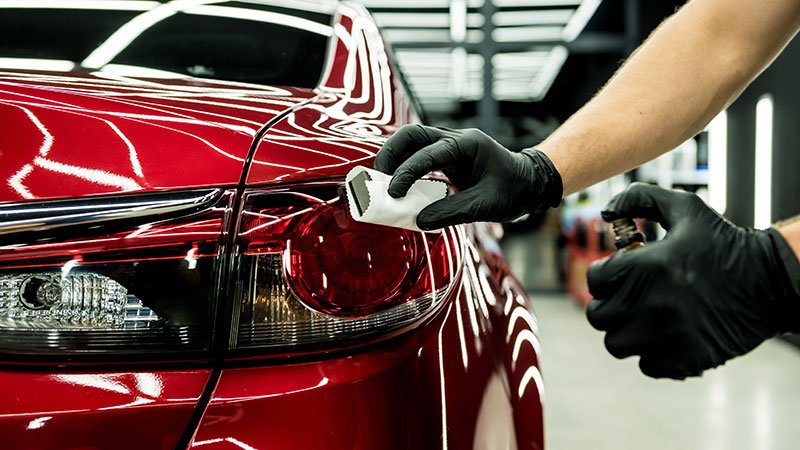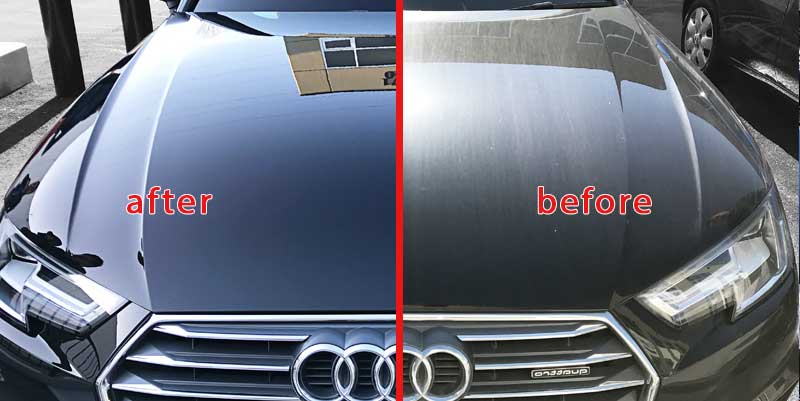Top Ceramic Coatings San Jose to Protect Your Vehicle's Paint
Top Ceramic Coatings San Jose to Protect Your Vehicle's Paint
Blog Article
Unveiling the Scientific Research Behind Ceramic Coatings: Just How Does It Work and Why Is It Above Conventional Choices?
Ceramic coverings have been obtaining appeal in numerous markets for their outstanding performance and durability. Understanding just how ceramic finishes work and why they surpass standard alternatives is critical for those seeking to improve the durability and strength of their materials.
The Chemistry of Ceramic Coatings
In recognizing ceramic finishes, delving right into the elaborate chemistry behind their composition is essential for realizing their performance and resilience. Ceramic coatings are largely made up of silicon dioxide (SiO2), which forms a solid and protective layer when used to various surface areas. This chemical structure supplies extraordinary resistance to warmth, chemicals, and rust, making ceramic coatings extremely demanded for a large range of applications.
The chemistry behind ceramic finishes involves the formation of covalent bonds in between silicon and oxygen atoms, developing a stiff network that enhances the finishing's durability and toughness. Additionally, the visibility of various other elements such as titanium, aluminum, and zirconium further improves the layer's residential or commercial properties, using increased hardness and bond to surfaces.
Comprehending the chemical make-up of ceramic coverings enables the personalization of formulas to fit details demands, whether it be for auto, industrial, or domestic functions. By taking advantage of the power of chemistry, ceramic finishings continue to lead the way for remarkable defense and efficiency in numerous industries.
Advantages of Ceramic Coatings

Another significant advantage of ceramic layers is their hydrophobic nature. This residential or commercial property causes water to grain up and roll off the coated surface area, carrying dust and contaminants with it. As an outcome, ceramic coverings make cleansing and preserving surface areas a lot easier and less time-consuming. Ceramic finishes offer improved color and gloss depth, giving surface areas a dynamic and glossy look. Generally, the plethora of advantages supplied by ceramic finishes make them a superior choice contrasted to conventional layer techniques.
Just How Ceramic Coatings Bond
Ceramic layers bond to surfaces via a procedure that entails molecular bond and chemical interactions. When a ceramic finishing is applied to a surface area, it forms a strong bond by chemically sticking to the surface area at a molecular level.
In addition, the chemical interactions between the ceramic coating and the surface better improve the bond. ceramic coatings san jose. These communications allow the ceramic finish to create a seamless and continual layer externally, offering excellent defense and longevity. Unlike typical layers that may sit on the surface area without completely bonding, ceramic finishings produce an irreversible bond that is immune to chemicals, UV rays, and extreme ecological conditions

Fundamentally, the bonding system of ceramic coverings ensures a lasting and efficient safety layer that outmatches standard finish options. This remarkable bond adds to the sturdiness, scratch resistance, and durability of ceramic coverings, making them a recommended option for different applications.
Toughness of Ceramic Coatings
The phenomenal long life of ceramic finishings comes from their robust molecular attachment and chemical interactions with surface areas, guaranteeing a sturdy safety layer that goes beyond traditional finish alternatives. When used, ceramic coverings create a solid bond with the substrate, developing a resilient obstacle against numerous environmental stressors such as UV radiation, chemicals, and abrasions. This bond is so safe and secure that it can endure the roughness of day-to-day use without degrading or weakening quickly.
Unlike traditional coverings that may degrade over time, ceramic coatings keep their honesty for a view it now prolonged period, providing durable defense for the underlying surface area. In general, the remarkable longevity of ceramic finishes makes them a premium choice for protecting a vast array of surfaces in various applications.
Ceramic Coatings Vs. Traditional Alternatives
In contrast to traditional covering techniques, ceramic coatings use an unique mix of longevity and safety capacities that establish them apart in different surface area protection applications. Standard choices such as wax or sealants give a short-term layer of defense that can wear away quickly, requiring frequent reapplication. On the other hand, ceramic finishes create a strong bond with the surface area, producing a semi-permanent or permanent barrier that is extremely immune to abrasion, chemicals, UV rays, and severe temperatures.
Moreover, ceramic layers use exceptional hydrophobic residential or commercial properties contrasted to typical finishes. The hydrophobic nature of ceramic finishes causes water to grain up and roll off the surface area, carrying dust and impurities with it. This self-cleaning impact aids to maintain the surface's sanitation and gloss for extended periods, minimizing the requirement for frequent maintenance.
Furthermore, ceramic coverings have a thicker layer contrasted to standard options, supplying improved scrape resistance and protection against minor impacts. This resilience makes certain lasting performance and helps maintain the visual allure of the treated surface for an extended duration.
Verdict
Finally, the scientific research behind ceramic finishings hinges on their chemical composition and bonding buildings, making them above typical options. The advantages of ceramic coatings consist of boosted toughness and defense for surfaces. By comprehending just how ceramic coatings work and their benefits over traditional choices, one can make educated choices when thinking about covering choices for different applications.
Unlike traditional finishes that may sit on the surface area without totally bonding, ceramic coatings develop a long-term bond that great site is immune to chemicals, UV rays, and rough ecological conditions.
The extraordinary long life of ceramic finishings stems from their robust molecular attachment and chemical interactions with surfaces, making sure a durable protective layer that exceeds typical finishing options.Unlike traditional coverings that might degrade look at this web-site over time, ceramic coverings maintain their integrity for an extended period, giving lasting protection for the underlying surface.In contrast to traditional layer methods, ceramic coatings provide an unique mix of toughness and protective abilities that establish them apart in numerous surface area security applications. By recognizing how ceramic layers job and their benefits over conventional alternatives, one can make educated decisions when taking into consideration layer alternatives for numerous applications.
Report this page